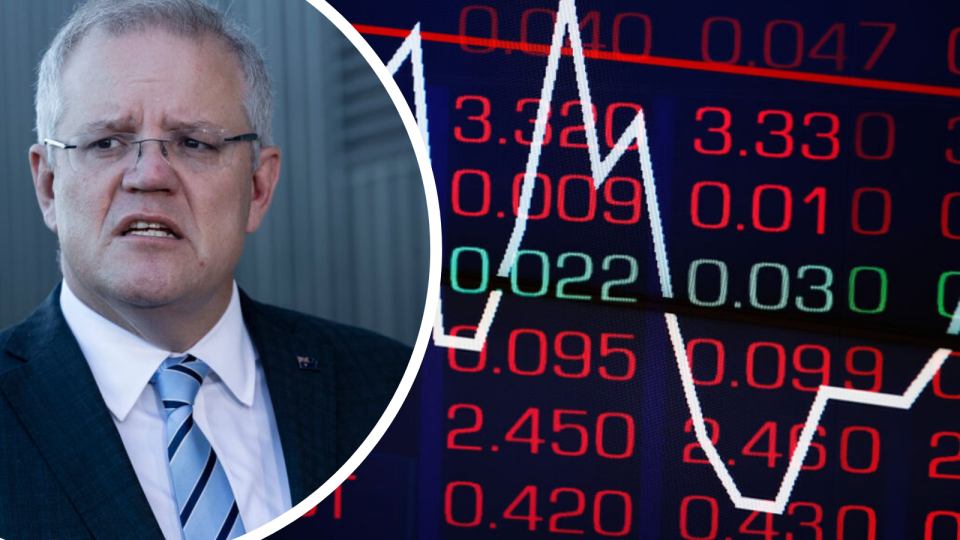The Future Fund can and should support the stock market

The collapse in the stock market is inflicting damage on retirees, their superannuation funds and other investors.
It is causing a crisis of confidence in an already weak economy and adding to the mental anguish associated with the coronavirus.
The ASX200 index of shares has dropped 35 per cent in the past month, eroding around $700 billion of value from the market.
At one level, the falls are understandable – the economy is in a deep recession. Business are losing money.
But some of the selling is fear, panic and also, driven by computer programs. When the crisis passes, and it will, these well run companies with good business models will return to profitability.
More from The Kouk: 1 million unemployed: The possible effects of coronavirus on the economy
More from The Kouk: Will Australia fall into recession? It's in Scott Morrison's hands
More from The Kouk: ‘Rapid reverse’: Exactly how weak is the Australian economy?
Extraordinary times call for extraordinary measures
There is a case for a form of government intervention in the stock market while the panic is extreme.
Support for the market could come from the Future Fund, the body set up to “invest for the benefit of future Australians.”
Some of that “benefit” would be welcome now.
The good news is that the Future Fund has a huge capacity to support the stock market.
At its latest disclosure, for 31 December 2019, just 6.8 per cent or $11.5 billion of is huge $168.1 billion of total assets was invested in Australian shares. This is a very small weighting in the overall portfolio into the Australian stock market.
The Future Fund had a chunky $23.1 billion in cash which can easily be invested in the stock market.
It has an additional $14.4 billion in debt securities, the bulk of which are liquid and therefore easy to sell, freeing up cash for stock purchases.
The two items alone total $37.5 billion of funds.
The Future Fund also has large holding of stocks in developed markets ($32.0 billion) and emerging markets ($17.1 billion). Clearly, the value of these will have been severely eroded with the global stock market crash, but the slump in the Australian dollar from around 67 cents to around 58 cents will provide some offset in Australian dollar terms should it downsize its holdings in these markets to buy Australian stocks.
It could even be argued that at this time of crisis it is Australian businesses, not emerging markets or US businesses that need investor support.
The Future Fund has substantial investments in what are more obscure or illiquid markets - $25.0 billion in private equity, $10.5 billion in property, $11.8 billion in infrastructure and timberland and $22.6 billion in what it terms ‘alternatives’.
Infrastructure and property are key assets. They are the very long term assets such a fund should hold.
The problem with private equity and alternatives, which total a massive $47.6 billion, is their tendency to be illiquid (hard to sell) and difficult to price (in the current environment, very few investors would be willing to buy many of these assets at any price).
This aspect of the Future Fund’s investments has been a dangerous investment strategy all along. It is like the Future Fund missed the key issue of the global financial crisis – being able to sell an asset when required.
Buy Australia
The Future Fund clearly has many tens of billions of dollars at hand of easily accessible money to buy Australian stocks.
If it did, it would provide some much needed support for the market and with that, an injection of much needed confidence and optimism in the stock market.
It would be able to buy some stocks at what in years to come will be ridiculous discounts.
While it may not buy at the low point of the current sell off, almost no one does, and it may take some time for the market to recover, buying stocks when the ASX200 is around 4,600 points could well, as the Future Fund’s mandate says, be for the “benefit of future Australians”.
It would be a classic example of a “buy Australia” campaign.
It would be radical, to be sure. But in times of crisis, when it is all hands on deck for the sake of the Australian population and its financial markets, a directive from the government to allocate money to Australian stocks would be a confidence booster in otherwise depressing times.
Make your money work with Yahoo Finance’s daily newsletter. Sign up here and stay on top of the latest money, news and tech news.
Follow Yahoo Finance Australia on Facebook, Twitter, Instagram and LinkedIn.

 Yahoo Finance
Yahoo Finance 